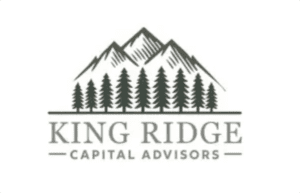Revealed – the 15 largest life insurance companies in the US

According to the poll results, 42% of participants admitted that they were “somewhat or not at all knowledgeable about life insurance,” with millennials (16%) and Gen Z (16%) more likely than other generations to think that they would not qualify for coverage, which is often not the case.
At the same time, most respondents were largely uncomfortable talking about end-of-life planning with their loved ones. The researchers note that these figures indicate “the importance of education and the need to reframe conversations about life insurance to focus on long-term health and wellness in order to build trust and close the need gap.”
Read more: Life expectancy declines highlight need for life insurance – Triple-I
“Life insurance is a key element in feeling financially secure, yet the need gap – what people have versus what they say they need – is at an all-time high (18 points) and more than double what it was 12 years ago,” the groups noted in their analysis of the survey findings.
The “unmet need for coverage” rose significantly during the pandemic and remains high in 2022, revealing the lasting impact of COVID-19. According to the study, about one in three American adults say that they are more likely to purchase life insurance this year, mostly as a result of the coronavirus outbreak.
“There are still over 100 million people in this country who don’t own enough life insurance” said David Levenson, president and chief executive of LIMRA – formerly Life Insurance Marketing and Research Association. “And while new policy growth jumped last year to the highest levels since 1983, there is still a lot that our industry can do to ensure that families are properly protected.”
The research also showed that many respondents believe that owning life insurance can pave the way to financial security, with 68% of policyholders saying that they feel financially secure compared to just 47% of non-policyholders.
Read more: COVID-19 triggers sharpest rise in life insurance payouts since 1918 flu epidemic
How does life insurance work?
Life insurance plans work by providing a tax-free lump-sum payment to the policyholder’s family after they die. Coverage is available in several variations but generally falls into two categories, with each type offering different levels of protection. These are:
1. Term life insurance
As the name suggests, this type of policy covers the policyholder for a set term. It pays out a stated amount – called a death benefit – if the insured dies within a specified period, meaning they can only access the payment in the years that the plan is active. Once the term expires, the policyholder has three options: renew the policy for another term, convert it to permanent coverage, or terminate the plan.
2. Permanent life insurance
Unlike term life insurance, a permanent policy does not expire. It comes in two primary types – whole life and universal life plans, which combine the death benefit with a savings component.
Whole life insurance policies offer coverage for the entire lifetime of the insured and the savings can grow at a guaranteed rate. Universal life insurance, meanwhile, uses different premium structures, with earnings based on how the market performs.
One of the main advantages of a permanent life insurance policy is that it can be used as an investment tool to accumulate wealth. Here are some other benefits of this type of coverage:
Tax-deferred growth: Permanent life insurance allows the policyholder to invest on a tax-deferred basis, meaning they are exempt from paying taxes on any interest, dividends, or capital gains on the plan’s cash value, unless they withdraw the proceeds.
Lifetime coverage: Permanent policies cover the insured for life, unlike term life insurance, which ends coverage after a set number of years.
Access to cash value: Policyholders can borrow against the cash value of a permanent life insurance policy if the need arises without incurring penalties, unlike in tax-advantaged retirement plans such as 401(k).
Accelerated benefits: Insureds may be able to receive between 25% and 100% of their policy’s death benefit even if they are still alive if they develop a critical illness – including invasive cancer, heart attack, renal failure, or stroke – and use the money to pay for medical bills.
Read more: Can you use life insurance to build wealth?
What does life insurance cover?
A life insurance policy covers almost all types of death, including those due to natural and accidental causes, suicide, and homicide. Most policies, however, include a suicide clause, which voids the coverage if the policyholder commits suicide within a specific period, usually two years after the start of the policy date.
Some life insurance providers may also deny a claim if the policyholder dies while engaging in a high-risk activity such as skydiving, paragliding, off-roading, and scuba diving.
In addition, an insurer may reject a claim based on the circumstances surrounding the death. For instance, if the beneficiary is responsible for or involved in the policyholder’s death.
How much does life insurance cost?
All the variables that can affect a person’s life expectancy also have an impact on the cost of a life insurance policy, including age, gender, occupation, hobbies, medical history, and smoking status. Premiums can also vary depending on the insurer and the type of policy.
Historically, rates tend to be higher for men because they often have a shorter life expectancy than women. Certain professions – including truck drivers, construction workers, and law enforcement officers – also expose a person to a higher risk of fatal injuries, pushing up premiums. The same with involvement in extreme and adventure sports.
Read more: Life insurance satisfaction flat despite pandemic – J.D. Power
Who can be named as beneficiaries of a life insurance policy?
Life insurance policyholders are required to designate a person who will receive the death benefit, also referred to as the beneficiary. This can be the insured’s spouse, immediate family, other relatives, friends, business partners, or even a charitable organization. Policyholders are also allowed to name several beneficiaries for their life insurance plans and assign how much benefit each person or group will receive.
There are two types of beneficiaries. Revocable, who the policyholder can replace at any time without needing to inform the affected individuals, and irrevocable, who cannot be changed unless the insured secures written permission from the beneficiaries.
What are the largest life insurance companies in the US?
The individual life insurance industry in the US continues to soar, with direct written premiums reaching almost $163 billion in 2021 – a more than 10% growth from the previous year, according to figures gathered by S&P Global Market Intelligence.
Of these, slightly over $100 billion, or almost two-thirds of the overall market share, were from the country’s top 15 biggest life insurers.
The business intelligence firm’s latest data also revealed very little change in market-share rankings for these companies last year, with the 10 largest life insurance providers retaining their spots from 2020.
Milwaukee-based Northwestern Mutual Life Insurance Co. remains the biggest individual writer in the US, with direct premiums rising more than 20% year-on-year to about $18.9 billion.
New York Life Insurance Co. and Massachusetts Mutual Life Insurance Co. placed second and third, respectively, with both mutual insurers experiencing a double-digit ascent in individual life insurance premiums.
Almost all insurers in the list reported growth in DWP. Sammons Enterprise Inc. and Protective Life Corp., which shot up the rankings to 11th and 12th from number 15 and 17 in 2020, registered the biggest annual increase at about 64% and 52%, respectively, writing $4.3 billion and $3.6 billion worth of life insurance premiums in 2021.
Only Lincoln National Corp. – fifth in the rankings – and MetLife Inc. – which dropped from 12th to 14th – reported a decrease in year-over-year individual life premiums.
These are the 15 largest life insurance companies in the US based on 2021 direct written premiums, according to S&P Global Market Intelligence’s data. The list includes each provider’s life insurance offerings and financial strength ratings.
1. Northwestern Mutual
Direct written premiums: $18.9 billion
Market share: 11.5%
Year-on-year premium change: 20.1%
Financial strength rating: AA+
Life insurance offerings: Term, whole, and universal life insurance
2. New York Life
Direct written premiums: $12 billion
Market share: 7.3%
Year-on-year premium change: 14.8%
Financial strength rating: AA+
Life insurance offerings: Term, whole, universal, and variable universal life insurance
3. MassMutual
Direct written premiums: $11.6 billion
Market share: 7.1%
Year-on-year premium change: 23.1%
Financial strength rating: AA+
Life insurance offerings: Term, whole, universal, and variable universal life insurance
4. Prudential
Direct written premiums: $8.3 billion
Market share: 5.1%
Year-on-year premium change: +2.3%
Financial strength rating: AA-
Life insurance offerings: Term, universal, variable universal, and indexed universal life insurance
5. Lincoln Financial
Direct written premiums: $6.8 billion
Market share: 4.2%
Year-on-year premium change: -1.1%
Financial strength rating: AA-
Life insurance offerings: Term, universal, variable universal, and indexed universal life insurance
Direct written premiums: $5.5 billion
Market share: 3.3%
Year-on-year premium change: 5.6%
Financial strength rating: AA
Life insurance offerings: Term, whole, and universal life insurance
7. John Hancock
Direct written premiums: $5.2 billion
Market share: 3.2%
Year-on-year premium change: 6.5%
Financial strength rating: AA-
Life insurance offerings: Term, universal, variable universal, and indexed universal life insurance
8. Guardian
Direct written premiums: $5 billion
Market share: 3%
Year-on-year premium change: 6.7%
Financial strength rating: AA+
Life insurance offerings: Term, whole, universal, and variable universal life insurance
9. Transamerica
Direct written premiums: $4.6 billion
Market share: 2.8%
Year-on-year premium change: 6.1%
Financial strength rating: A+
Life insurance offerings: Term, whole, universal, and indexed universal life insurance
10. Pacific Life
Direct written premiums: $4.5 billion
Market share: 2.8%
Year-on-year premium change: 13.3%
Financial strength rating: AA-
Life insurance offerings: Term, universal, variable universal, and indexed universal life insurance
11. Sammons
Direct written premiums: $4.3 billion
Market share: 2.6%
Year-on-year premium change: 63.7%
Financial strength rating: A+
Life insurance offerings: Term, indexed universal, and guaranteed universal life insurance
12. Protective
Direct written premiums: $3.6 billion
Market share: 2.5%
Year-on-year premium change: 52.3%
Financial strength rating: AA-
Life insurance offerings: Term, whole, universal, variable universal, and indexed universal life insurance
Direct written premiums: $3.6 billion
Market share: 2.5%
Year-on-year premium change: 0.4%
Financial strength rating: AA-
Life insurance offerings: Term, whole, variable universal, indexed universal, and guaranteed universal life insurance
14. MetLife
Direct written premiums: $3.2 billion
Market share: 2.2%
Year-on-year premium change: -7.1%
Financial strength rating: AA-
Life insurance offerings: Life insurance offered through workplace plans only
Direct written premiums: $3 billion
Market share: 1.8%
Year-on-year premium change: 21.1%
Financial strength rating: AA-
Life insurance offerings: Term, whole, universal, and variable universal life insurance





